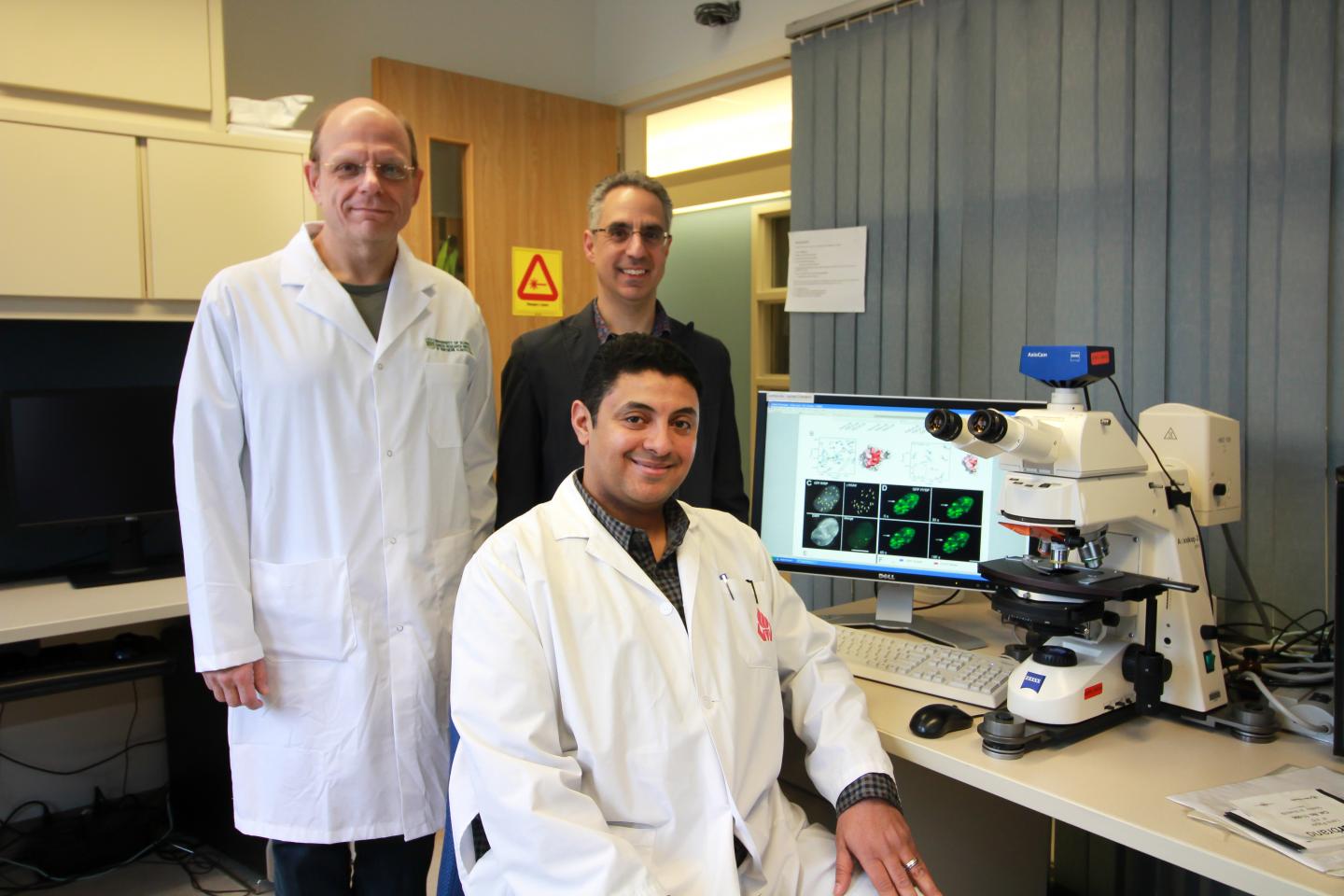
Credit: Melissa Fabrizio
University of Alberta researchers have discovered a mechanism that may make cancer cells more susceptible to treatment. The research team found that the protein RYBP prevents DNA repair in cancer cells, including breast cancer.
"RYBP would make cancer cells more sensitive to DNA damage, which would make chemo or radiation therapy more effective," said Mohammad Ali, a postdoctoral fellow and the lead author of the study.
This discovery could potentially be another avenue for precision medicine, which would allow cancer treatment to be tailored to the patient's DNA. The new RYBP biomarker could predict which patients will benefit from specific types of chemotherapy. There may also be opportunities to develop drugs that treat cancer by activating RYBP in tumours, including breast cancer.
Ali found that breast cancer cells that have high levels of RYBP are more sensitive to DNA damage after radiation or drug treatment, including PARP inhibitors (inhibitors of the enzyme poly ADP ribose polymerase used in cancer treatment). This makes high-RYBP breast cancer cells respond better to some anticancer and radiation therapy.
The protein RYBP is best known to regulate gene expression, being a member of the large epigenetic protein complex PRC1. In previous research, this team of University of Alberta researchers found that PRC1 complex helps to repair DNA damage in cancer cells. To their surprise, Ali discovered that RYBP prevents DNA repair and, more specifically, the error-free repair process.
The research team then identified the mechanism at the molecular level and the exact part of the protein that is responsible for this phenomenon.
"Cancer cells that resist therapy are able to repair themselves despite the DNA damage. By preventing them from repairing, we could more effectively treat cancer," said Ali. "My dream is to take this from bench to bedside and allow physicians to screen patients for better outcomes."
###
The project was a collaboration between two U of A labs, led by Michael Hendzel from the Departments of Oncology and Cell Biology and Leo Spyracopoulos from the Department of Biochemistry. Spyracopoulos helped to identify the structural biology of this phenomenon. Both Hendzel and Spyracopoulos are members of the Cancer Research Institute of Northern Alberta.
The study is published in Cell Reports. Funding for this project was provided by the Alberta Cancer Foundation, Alberta Innovates, the Alberta Cancer Prevention Legacy Fund and the Canadian Institutes of Health Research.
Media Contact
Shelby Soke
[email protected]
403-988-4730
@ualberta_fomd
http://www.med.ualberta.ca





